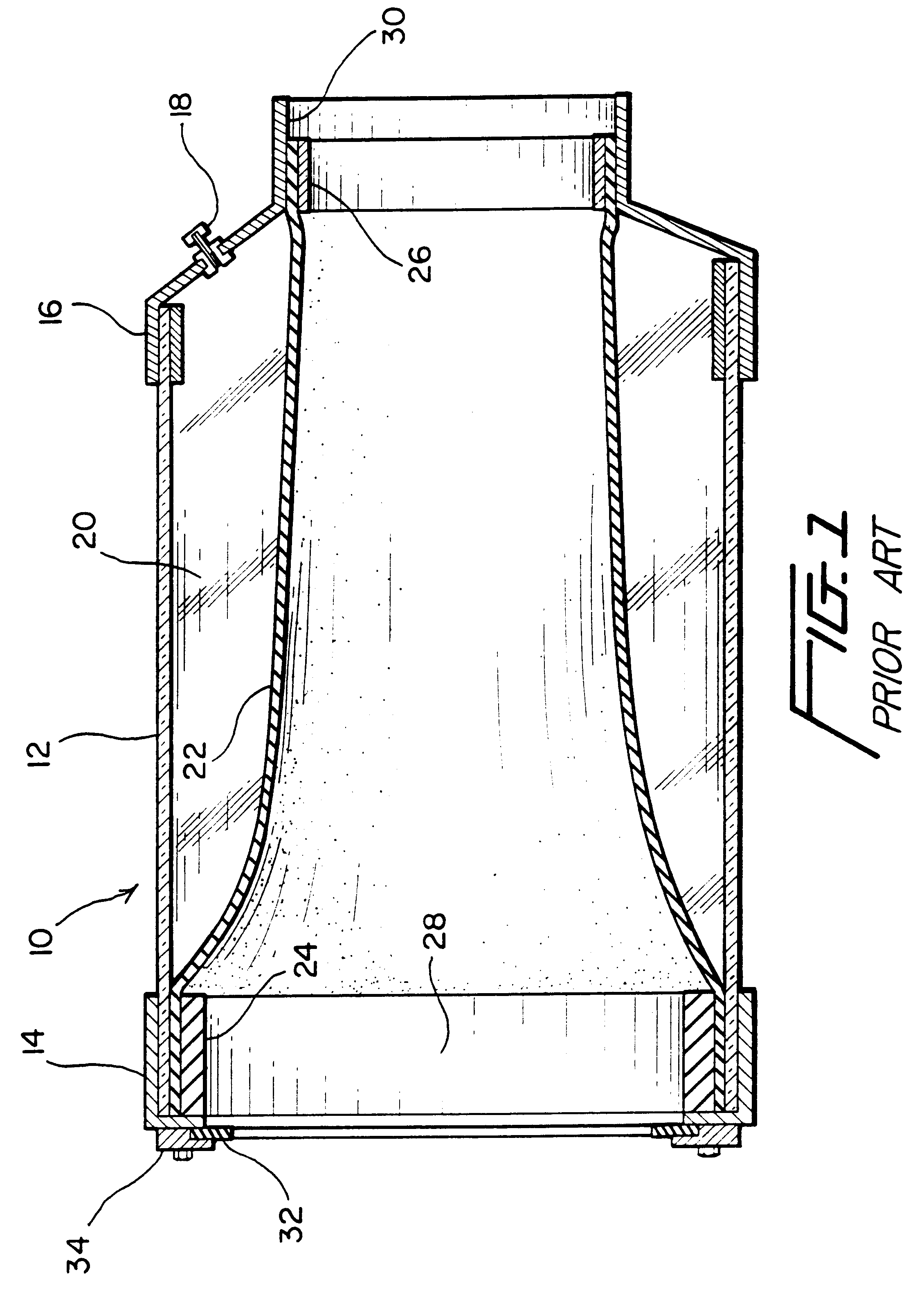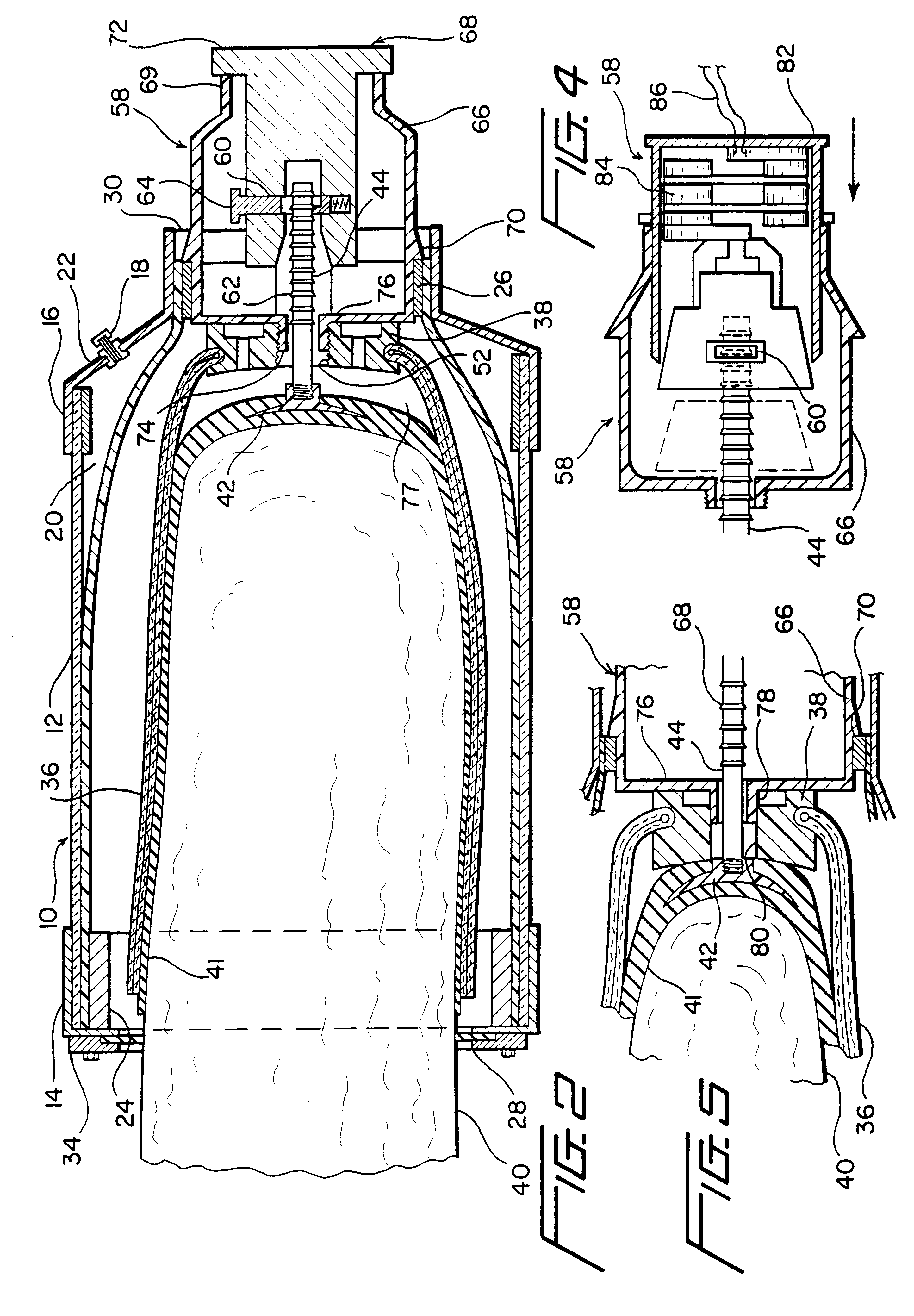Method for making prosthetic residual limb socket
a residual limb and prosthesis technology, applied in the field of definitive prosthesis sockets, can solve the problems of time-consuming and expensive process, process, and process, and achieve the effect of not being suitable for continuous long-term use and forming definitive prosthesis sockets
- Summary
- Abstract
- Description
- Claims
- Application Information
AI Technical Summary
Problems solved by technology
Method used
Image
Examples
Embodiment Construction
In accordance with prior art techniques for making residual limb sockets intended to receive a prosthesis for the limb, a female mold is typically formed by a casting technique whereby a water activatable moldable and hardenable or curable wrapping (e.g., plaster of paris bandage) is applied in soft pre-hardened condition over the distal residual limb area, the wrapping is permitted to set up or harden while it is pressurized by a pneumatically driven bladder or membrane against the residual limb area, and after hardening (curing), the wrapping is removed from the residual limb area so as to provide a female cavity duplicating the residual limb distal end contour.
A positive cast of the residual limb distal end area is then made using the female cavity as a female mold and finally after suitable adjustments or rectifications of the mold are made, a definitive socket is molded by casting or forming a suitable hardenable socket structural material over the positive cast. Various finish...
PUM
| Property | Measurement | Unit |
|---|---|---|
| tension force | aaaaa | aaaaa |
| tension | aaaaa | aaaaa |
| degree of tension | aaaaa | aaaaa |
Abstract
Description
Claims
Application Information
 Login to View More
Login to View More - R&D
- Intellectual Property
- Life Sciences
- Materials
- Tech Scout
- Unparalleled Data Quality
- Higher Quality Content
- 60% Fewer Hallucinations
Browse by: Latest US Patents, China's latest patents, Technical Efficacy Thesaurus, Application Domain, Technology Topic, Popular Technical Reports.
© 2025 PatSnap. All rights reserved.Legal|Privacy policy|Modern Slavery Act Transparency Statement|Sitemap|About US| Contact US: help@patsnap.com



